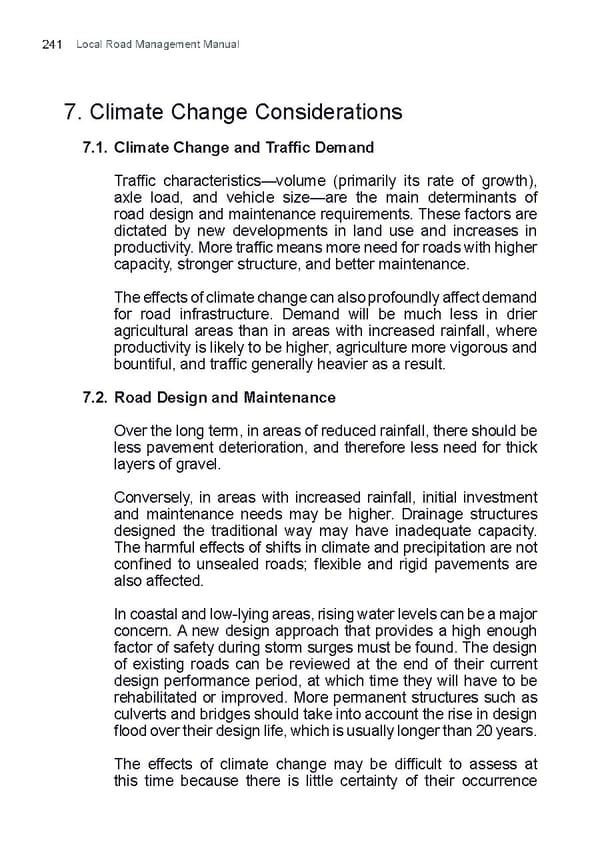Local Road Management Manual 241 7. Climate Change Considerations 7.1. Climate Change and Traiffc Demand Traiffc characteristics—volume (primarily its rate of growth), axle load, and vehicle size—are the main determinants of road design and maintenance requirements. These factors are dictated by new developments in land use and increases in productivity. More traiffc means more need for roads with higher capacity, stronger structure, and better maintenance. The effects of climate change can also profoundly affect demand for road infrastructure. Demand will be much less in drier agricultural areas than in areas with increased rainfall, where productivity is likely to be higher, agriculture more vigorous and bountiful, and traiffc generally heavier as a result. 7.2. Road Design and Maintenance Over the long term, in areas of reduced rainfall, there should be less pavement deterioration, and therefore less need for thick layers of gravel. Conversely, in areas with increased rainfall, initial investment and maintenance needs may be higher. Drainage structures designed the traditional way may have inadequate capacity. The harmful effects of shifts in climate and precipitation are not conifned to unsealed roads; lfexible and rigid pavements are also affected. In coastal and low-lying areas, rising water levels can be a major concern. A new design approach that provides a high enough factor of safety during storm surges must be found. The design of existing roads can be reviewed at the end of their current design performance period, at which time they will have to be rehabilitated or improved. More permanent structures such as culverts and bridges should take into account the rise in design lfood over their design life, which is usually longer than 20 years. The effects of climate change may be diiffcult to assess at this time because there is little certainty of their occurrence
 LRM Manual CMGP Page 240 Page 242
LRM Manual CMGP Page 240 Page 242